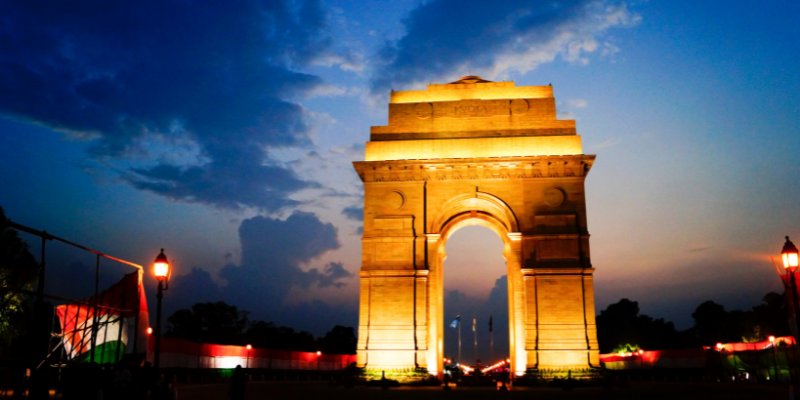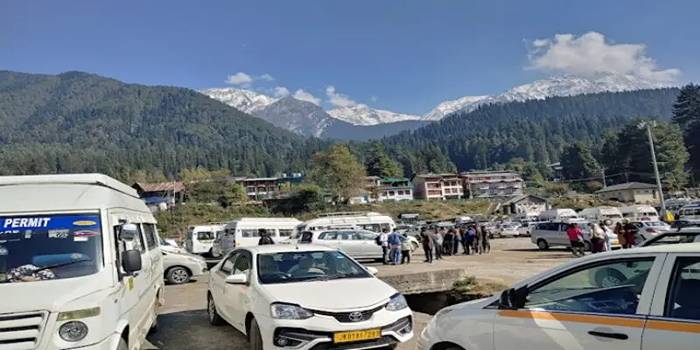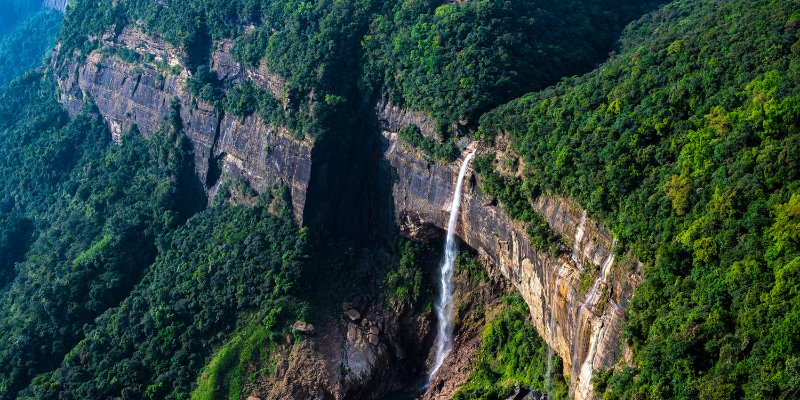With its many cultures and centuries-old history, India has many stunning monuments to its heritage. These architectural wonders reflect the country's many cultures and past ages. These monuments take tourists through India's history in a unique way. The Taj Mahal is generally the first stop on a tour of India's most significant monuments. This Mughal architectural marvel of everlasting love was commissioned to commemorate his beloved wife, Emperor Shah Jahan. The ivory-white marble edifice with elaborate decorations and beautiful gardens makes a lasting mark on visitors.

Taj Mahal:
The Taj Mahal's visitors enjoy its stunning appearance and immersive experience. Visitors are transported to a time of grandeur by the mausoleum's beautiful sculptures and inlaid diamonds. Light-reflecting off marble surfaces at various times of the day gives an ethereal touch to the sensory experience. This UNESCO World Heritage Site showcases India's architecture and symbolizes eternal love.
Head west to Jaipur to see the Hawa Mahal, or "Palace of the Winds," a stunning architectural marvel. In 1799, Maharaja Sawai Pratap Singh built this five-story honeycomb-like building with finely latticed windows to let royal ladies watch street celebrations in seclusion. The Hawa Mahal's pink sandstone exterior symbolizes Jaipur's culture and Rajput architecture.
Jaipur's Hawa Mahal:
The Hawa Mahal silently records Jaipur's regal heritage and architectural beauty. A pyramidal structure resembling Lord Krishna's crown provides spiritual inspiration for its beauty. The palace's central position in the Pink City draws tourists to explore Rajasthan's royal heritage.
Heading north to Delhi, the Qutub Minar tells the city's Islamic heritage among the rush and bustle. The world's highest brick minaret, built by Qutub-ud-din Aibak in 1193, has elaborate calligraphy and geometric motifs. The Qutub Minar complex, a UNESCO World Heritage Site, includes historic ruins and monuments that show the region's different architectural styles throughout the ages.
Qutub Minar in Delhi:
The Qutub Minar shows Delhi's shift from Hindu to Islamic authority. Visitors may ascend the spiral staircase to the summit for panoramic views of old and modern Delhi. History buffs and scientists are intrigued by the complex's Iron Pillar, which is rust-resistant metallurgical.
The Khajuraho Temples in Madhya Pradesh showcase India's cultural and artistic diversity. These temples, erected between 950 and 1150 AD, include elaborately carved statues representing human life, mythology, and sexuality. The UNESCO World Heritage Site temples showcase the Chandela dynasty's creative expression beyond architecture.
Khajuraho Temples:
The graphic descriptions and symbolic sculptures of the Khajuraho Temples reveal medieval India's social standards and culture. Beyond their beauty, these temples preserve India's cultural variety by blending spirituality and aesthetics. Khajuraho is a trip through traditional Indian philosophy and an artful life celebration.
The Vijaya Vittala Temple in Hampi showcases Vijayanagara architecture. The temple of Lord Vittala captivates tourists with its elaborately carved pillars, musical pillars, and stone chariot, symbolizing heavenly conveyance. The religious relics of Hampi, a UNESCO World Heritage Site, reveal its historic grandeur.
Hampi's Vijaya Vittala Temple:
The Vijaya Vittala Temple in Hampi transports visitors to a time when art and spirituality blended. The Stone Chariot and other temple wonders demonstrate Vijayanagara Empire art. The temple complex's ruins tell the narrative of a prosperous society, delighting history and architectural buffs.
The India Gate in New Delhi honors Indian troops who died in World War I. Sir Edwin Lutyens' towering archway symbolizes national pride and solidarity. The India Gate is a landmark and place of introspection surrounded by verdant grounds and Amar Jawan Jyoti, an everlasting flame.
India Gate in New Delhi:
With its grand structure and perpetual light, the India Gate commemorates Indian troops' bravery. Visitors feel awe and appreciation for the archway's commemoration marking fallen troops. India Gate is a renowned tourist and local attraction celebrating the nation's history and resilience.
Continue to Fatehpur Sikri to see a wholly preserved Mughal architectural marvel. Akbar built Fatehpur Sikri in the 16th century as the Mughal Empire's temporary capital. Buland Darwaza, Jama Masjid, and Jodha Bai Palace are among the complex's remarkable buildings.

Fatehpur Sikri:
Fatehpur Sikri allows tourists to experience the Mughal monarchs' world. Emperor Akbar constructed the city near Agra in the 16th century, making it the Mughal Empire's capital. Its stunning red sandstone architecture combines Persian, Indian, and Islamic elements. Entering the Buland Darwaza, a triumphal gateway, and walking through the towering monuments takes visitors to a time of richness and imperial grandeur.
Fatehpur Sikri's red sandstone buildings depict Mughal grandeur's narrative. These monuments reveal Mughal court life with elaborate carvings and architectural elements. The Jama Masjid courtyard symbolizes Mughal spirituality and community with its enormous open area and exquisite design. The Diwan-i-Khas, or Hall of Private Audience, shows the imperial administration's magnificence, where the monarch met with dignitaries.
The domestic areas, notably Jodha Bai's palace, reveal Mughal life's more private side. Jodha Bai's court, named after Akbar's Rajput queen, blends Rajput and Mughal architecture. Its elaborate design and intelligent placement reveal Mughal cultural absorption. The castle shows how many cultures coexisted in the royal court.
Fatehpur Sikri's well-preserved monuments recall a vibrant cultural and architectural epoch. Every detail tells a story of royal life, administrative skills, and the Mughal era's colorful culture. Visitors become participants in Fatehpur Sikri's story, immersing themselves in a bygone age that resonates through the years. Explore this once-thriving imperial metropolis to connect with a culture that shaped India's history.
Conclusion:
In conclusion, India's monuments provide a colorful tour of its history and culture. Each memorial, from the Taj Mahal's timeless love to Fatehpur Sikri's architectural grandeur, reveals India's complex history, cultural transformations, and creative expressions. These monuments reveal past ideals, beliefs, societal standards, and architectural marvels.
These monuments also display the skill and vision of the artisans, architects, and emperors who built them. The Qutub Minar's towering presence in Delhi and the Vijaya Vittala Temple's elaborate sculptures in Hampi are examples of India's cultural and architectural history. These monuments shape modern India, with the India Gate symbolizing national pride and togetherness and Fatehpur Sikri's well-preserved architecture linking to India's imperial heritage. These monuments are an immersive experience that connects you to India's identity and soul, inspiring inquiry, reflection, and a deep respect for its rich history.




